Go before they’re gone: Two of Colombia’s natural wonders hang in the balance
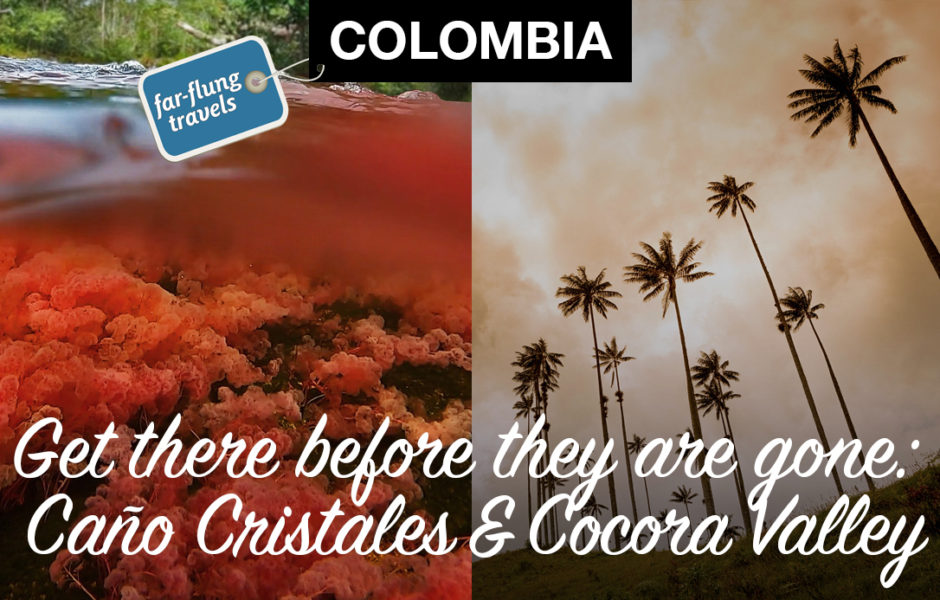
Cocora Valley and Caño Cristales are not-to-miss tourist destinations in Colombia, but they won’t be around forever.
I have an extensive list of must-visit places in the world and it keeps growing. More places get added before I have the opportunity to check others off the bucket list. But this year, I’ve given priority to endangered environments that hang in the balance. Some of the most beautiful places around the globe have an uncertain future, whether they are under threat from human activity or the effects of climate change—or both.
Travel is supposed to exhilarate and titillate—and it does that—but sometimes the experiences are intertwined with a touch of existential sadness for what the earth stands to lose, not in the distant future, but sooner rather than later.
As I write this, Prince Harry has just launched Travelyst, which is designed to help travelers make more environmentally friendly decisions while on the go.
Sustainable tourism was on my mind earlier this year when I returned to Colombia for my fifth visit. On this occasion, I decided to go to two of the country’s most-revered natural wonders: the Cocora Valley and Caño Cristales. Both places are a sight to behold. Both have unique ecosystems protected by the Colombian government. Both still could, and probably will, be gone in the blink of an eye.
The giant palms that tower over the Cocora Valley (Salento, Colombia)
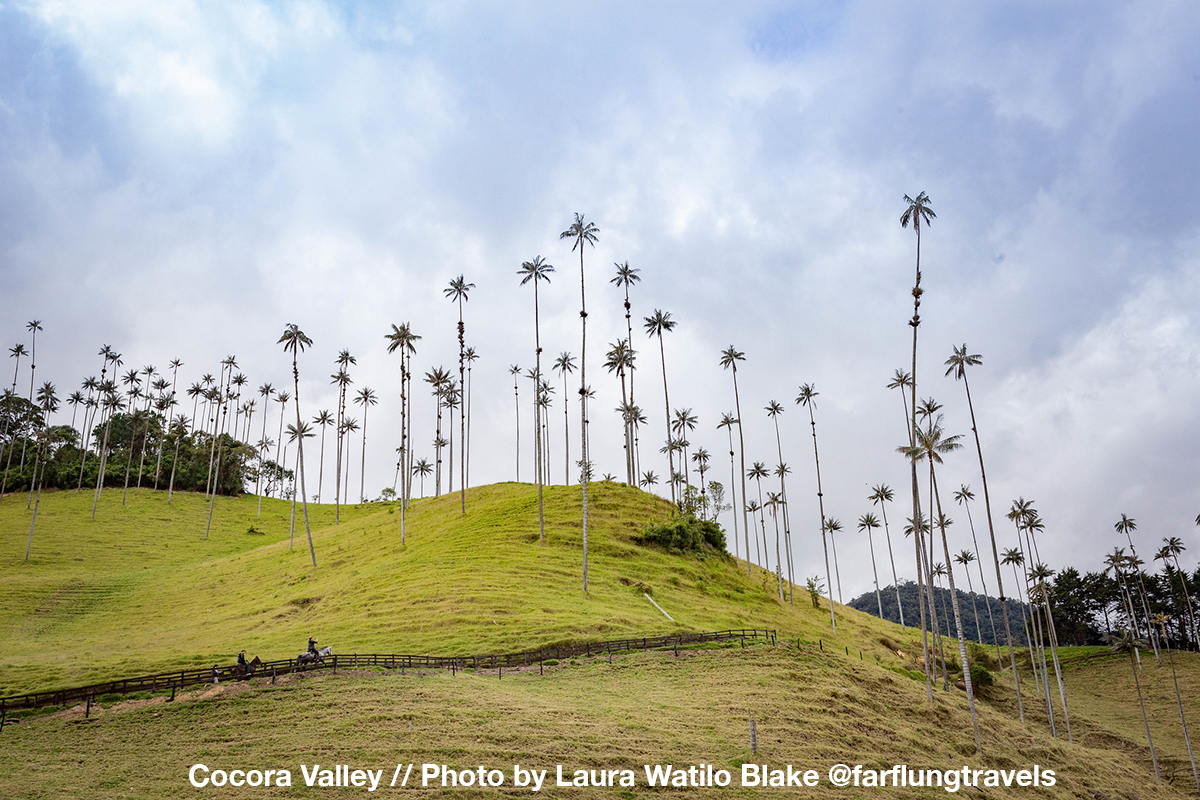
These towering wax palms are the national tree of Colombia.
The world’s tallest palm trees aren’t found on sandy beaches in the tropics; they grow in the foothills of the Andes Mountains. They are so famed in Colombia that the Quindío Wax Palm has the distinction of being the national tree. The most famous place to see them is in the Cocora Valley, near the town of Salento.
Spread out and exposed on the green hillsides, they look almost like lit sparklers on the Fourth of July with their long skinny trunks topped with an explosion of palm fronds. However, their beauty alone cannot sustain them. Researchers say that the vast majority of these towering giants will be gone from the valley by 2090. Deforestation and cattle grazing has had a huge impact on the reproduction of wax palms.
While they are protected by law, the vegetation that grows in their natural environment is cut down, leaving the palms to stand on their own. Their seeds drop to the ground and are eaten by cows, which means there are no new wax palms to replace the aging palms that live about 80-100 years and reach as high as 130 feet. By 2029, more than half of the palms in the upper part of the Cocora Valley will have died, according to a report in El Espectador.
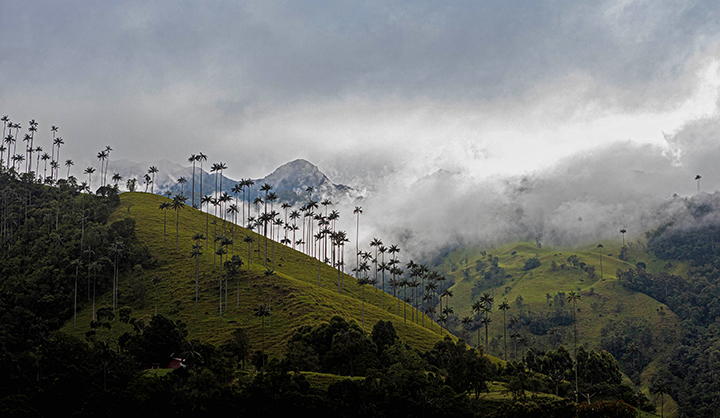
This stunning vista of towering 100-year-old wax palms in Colombia could come to an end in our lifetime unless we take steps to protect these beautiful giants. Luckily, some area businesses are planting new palms in an effort to keep the species alive in the Cocora Valley.
The colorful aquatic plant that gives Caño Cristales its rainbow hues (La Macarena, Colombia)
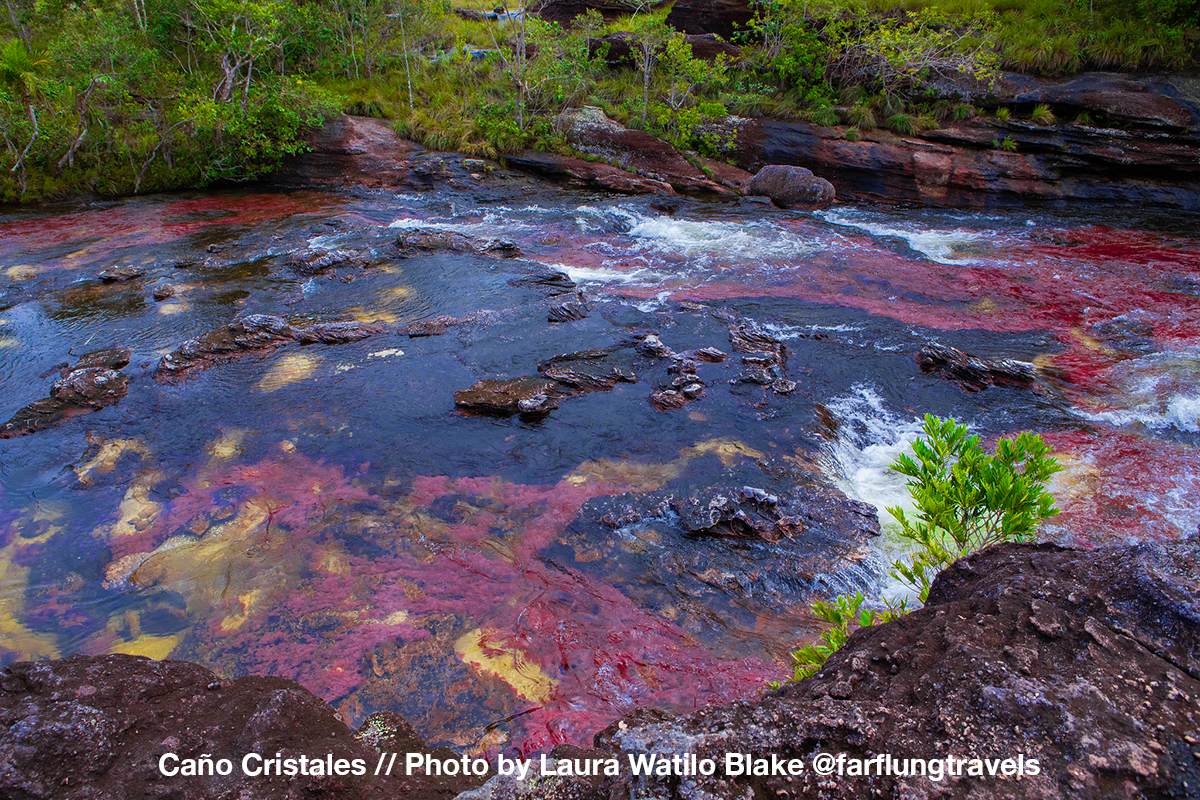
Caño Cristales has been called many things, from the liquid rainbow to the river that ran away from paradise. It’s no doubt this river is one of the most spectacular in the world. It owes its vibrant hue to clavigera macarenia, an aquatic plant that blooms bright red from June to November.
Deep in a corner of Colombia, where the plains meet up with the Andes Mountains and the Amazon, Caño Cristales is like no other river in the world. For half the year, it looks like any other waterway, but then something magical happens. From June to November, between the rainy and dry seasons, the tributary of the Guayabera River bursts with brilliant hues thanks to a rare aquatic plant known as clavigera macarenia . Located in the Serranía de la Macarena National Park, this stunning and unique place has earned many nicknames, such as the Liquid Rainbow, the Melted Rainbow, the River of Seven Colors and even the River That Ran Away from Paradise.
Protecting the environment around Caño Cristales has become a priority in recent years, following decades of control by the FARC, not to mention mass deforestation and exploitation of natural resources in the region. Access to the areas in the park is restricted to 120 tourists each day to minimize the impact humans have on the delicate ecosystem. In addition, visitors must not wear insect repellents or sunscreen because the chemicals inhibit the growth of the aquatic plants.
Perhaps even more concerning is the threat climate change poses to the region. The plant’s life cycle can be interrupted when there’s not enough rain or sunlight. Too little rain, the plants wither; too much rain, and the sun can’t reach the plants, which adhere to rocks at the bottom of the river. And according to climatologists there are fewer and fewer seasons where the conditions are just right.
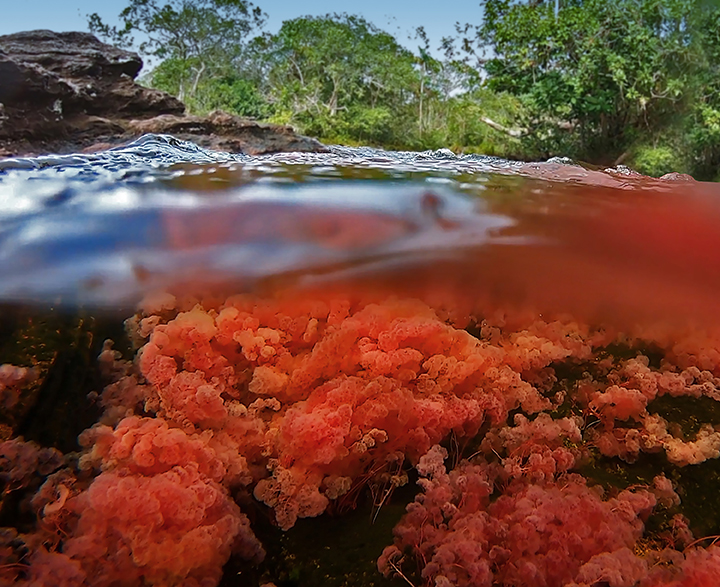
Crimson-hued clavigera macarenia blooms under the surface of the crystal-clear river of the Serranía de la Macarena National Park in Colombia’s Meta department.
The future is now
These are two of many places in the world that have more to lose than to gain in the near future. It takes input and guidance from governments and local populations in order to protect and preserve these places for future generations. Sustainable tourism also will continue to play an important role in the preservation of unique environments, too. After all, when we travel, we see, we learn, we fall in love and hopefully we take action to help preserve these special places for future generations.

Write a Reply or Comment